





























As I do most years around this time, I start dreaming of spring. Over at LOWDSA, we are also very excited about this new season and the projects we have underway, which you can read more about in Ashley’s message.
A few things on my mind…
To date, there has been no decision about a preferred route. Most recently I received this update from Greg Walas, Ministry of Transportation (MTO) via email, “…the next milestone will be the preferred alignment selection. We are currently undergoing evaluation of the alternatives. I wish I had a timeline for this but that’s just not the case for this project.” In a previous email (December 2023), we were told that “there are currently no decisions, and any are at least a year away.”
LOWDSA has been seeking representation from the lakes along Highway 17 from the Manitoba border to the bypass, so that we can include these perspectives. Currently, we have a new representative from Clearwater Bay and have also reached out to other property associations along the way. If interested, please contact us.
I have stressed with the MTO that future meetings should be held at times and locations that are appropriate for the majority of the Lake of the Woods area property owners. I also offered the Ministry access to our Area News and social media platforms so that announcements and updates can be provided to our members on a timely basis. I suggested that Public Information Meetings (PIM’s) could be offered in Winnipeg and that virtual meetings would also be helpful. Last fall, two LOWDSA representatives attended the PIM held in Kenora.
We also have a LOWDSA representative on the Restricted Area Order board. The Ministry contact was informed that the Restricted Area Order (ROA), which has been in place since 1990 and was initiated by LOWDSA’s predecessor, Lake of the Woods District Property Owners’ Association, has as its purpose to protect the vulnerable waters and habitat from development which could negatively impact on this sensitive ecosystem. For the interest of our members, the RAO only covers the land south of the TransCanada highway as it passes through the Clearwater Bay Corridor. There is one exception where the order exists to protect the wetland which extends north of the highway along
Deception Creek. This information was also brought to the attention of the MTO rep. We will continue to work on behalf of all of our members to keep you updated with the most recent developments. This website might help keep you “up to speed”: 4lanehighway17kenora.ca.
There are those of us who cheer our lower heating bills and those who scan the forecast, hoping for cold and snow. You might find it interesting to know that not only does a winter such as this one wreak havoc on our recreation industry, but a warm winter can also have dramatic effects on local wildlife. While deer tend to thrive in years with little snow and warm temperatures, it’s not the same for moose. Extended fall weather can mean a longer period for winter ticks, a significant factor in moose mortality. Clusters of winter ticks can kill adult moose while their young are the most vulnerable. Less snow means less insulation of the soil, so a warmer winter means a higher risk of freezing. Many other species—frogs, toads and bees—may also suffer from the lack of insulation. This is only a snippet of the overall effects of low snow cover. Combined with later, warmer fall seasons and earlier, warmer spring seasons, we can expect to see many changes in our collective ecosystems.
2024 will be a year of change! We are in the process of redesigning our website, updating our look, and implementing a more efficient membership management system for launch later this summer. And, another new initiative is the establishment of an employee benefit plan. Consequently, there will be a slight increase in membership fees to help cover these costs.
We are also ramping up our appeal to the younger demographic of the Lake of the Woods area. You will see this reflected in our future staffing. We want the younger generation to help us forge a new path into the future.
We look forward to seeing you at our second annual Celebrate Lake Life. We are also planning a LOWDSA member golf tournament. We will provide dates shortly. Lastly, keep your eyes out for a new co-sponsored billboard on Highway 17 east close to the bypass.
See you on the water…soon! Thanks for your support!


Happy almost spring! As I sit down and write the first Executive Director note for 2024, I’m struck by what a winter we had.
The mild weather made it enjoyable to get outside, although the lack of snow was frustrating for those who have snowmobiles or skis sitting in their garage. It will also be interesting to see how the lack of snow plays into the lake levels for the spring and summer seasons.
We’ve been busy planning our 2024 LakeSmart year. We’re kicking off the season with our seedling sales at our usual locations at Longbow Lake Firehall and Clearwater Bay Firehall. If you haven’t purchased seedlings yet, please feel free to fill out and submit the form on page 11. You can purchase them on our website, lowdsa.com under the News, Events, & Info section. You can also call our Assistant Executive Director, Alena, at 1-888-265-9784.
Brie McCardle, our Environment Program Manager, has been working on planning events and activities for our LakeSmart program. We are looking forward to getting back under the tent at the Matiowski Farmers’ Market to continue education on living green at the lake. We also have plans to visit classrooms and attend children's summer camps to work with our future generations of environmental stewards. If you know of any students who are looking to gain community hours, we welcome them to come and join us during the summer. We have many opportunities to offer. You can contact Brie at epc@lowdsa.com.
We’ve been working with our community partners on some new ways to live out our mission, vision, and values, and do as much education and outreach as we can. We will be making our way to the Sioux Narrows-Nestor Falls area throughout the coming season for events such as their summer speaker series (featuring LakeSmart talking about healthy shorelines and invasive species), as well as youth programming, boat wash stations and more. Stay tuned to our social media and the next issue of Area News for dates. We are excited!
We had the opportunity to attend the National Environmental Gathering hosted by Grand Council Treaty #3 at Niisaachewan Anishinaabe Nation. They had some very insightful speakers that shared their knowledge about Manito Aki Inaakonigewin, climate change, and traditional environmental knowledge. We always leave these types of events learning so much and are so thankful for the opportunity. It enables us to make meaningful connections and learn from traditional knowledge keepers.
We hope you are able to join us for our 62nd Annual General Meeting on May 15, 2024, at 7 p.m, which will again be held online via Microsoft Teams. Please refer to page 7 for more information on how to register. You can also call our Assistant Executive Director, Alena, at 1-888-265-9784. We look forward to seeing you!
As always, if you have any questions or concerns, please feel free send an email to executivedirector@lowdsa.com.

PUBLISHED BY
Wake Marketing Inc., 140 Main St. S., Kenora, ON P9N 1S9
Publisher: Mike Greaves, mike@areanewsmagazine.ca
Editor: Leanne Fournier, editor@areanewsmagazine.ca
Art Director: Shayla Smith, shayla@wakemarketing.ca
Design & Layout: Mike Newton, Ashley Pereira
Advertising: Deb Polakoff, deb@areanewsmagazine.ca
The Lake of the Woods area and LOWDSA’s activities take place in the territory of the Anishinaabe Nation in Treaty #3 and the traditional homelands of the Métis Nation of Ontario. The beautiful lakes, shorelines, and environment that we enjoy should be respected for their cultural significance and history.
DISTRIBUTION & MEMBERSHIP
Lake of the Woods Area News is published five times per year and is mailed to LOWDSA members. To receive Area News visit lowdsa.com and become a member today.
TOLL-FREE 1-888-265-9784 PHONE (807) 468-8715
Publication mail agreement #43107013. Printed in Canada.
© 2024 LOWDSA. All rights reserved. The contents of this publication may not be reproduced by any means, in whole or in part, without prior written consent. Statements of fact or opinion are the responsibility of the author and may not represent the view of LOWDSA or Wake Marketing Inc.
Ashley Hoffmeister The official publication of the Lake of the Woods District Stewardship AssociationKaitlin Richardson (below right) holds Master’s and Bachelor of Environmental Studies degrees and diplomas in Ecological Restoration and Rehabilitation (with distinction) and Environmental Assessment from the University of Waterloo. Kaitlin has been working in the conservation field since 2013 and with Nature Conservancy of Canada (NCC) since early 2018, first as the Conservation Biologist for the Lake Huron area and now as the Program Director leading NCC’s conservation work in Northern Ontario since 2021. Kaitlin lives in Thunder Bay and her work covers a vast geography from Sault Ste. Marie in the east, north to Hearst and west past Thunder Bay to Fort Frances, Rainy River and Kenora. She is passionate about native plant gardening and turtles and enjoys spending her free time hiking, cross country skiing, curling and hanging out with her dogs and cats.

Mirabai Alexander (above left) is NCC’s Conservation Biologist for northwestern Ontario and has worked with NCC since November 2022. She holds a Master of Environmental Studies from Dalhousie University and a Bachelor of Environmental Studies from the University of Waterloo. She grew up on a small island on Lake Superior and has spent the last decade studying bank swallows, sturgeon, sage grouse, and black-and-white warblers. She came to NCC from Parks Canada where she worked sharing stories about birds, minnows and shipwrecks at the Lake Superior National Marine Conservation Area. Mirabai is based in Thunder Bay and enjoys biking, cross country skiing and playing Irish music.

Heather Frayne is a retired print, radio and television journalist, communications consultant and author living in Winnipeg. Like many 60-somethings, her life now revolves happily around grandchildren. Heather married an avid canoeist. They and their children spent most summers exploring lakes and rivers in the Kenora area.
Sumeep Bath
Alena Collier
Garth Collier
Sharon Gurney
Ashley Hoffmeister
Connie Larson
Brie McCardle
Duncan McEwen
Rod McKay
Drew Monkman
Lori Nelson
Jeff Polakoff
Henry & Anita Rasmussen
Jacob Rodenburg
Dave Schwartz
Todd Sellers
PRESIDENT:
Garth Collier, Schnarr Lake
PAST PRESIDENT:
Christine Semenchuk, Bigstone Bay
SECRETARY:
Jackie Lowe, Gun Club Island
TREASURERS:
Carley Fyke, Welcome Channel; Jeff Rempel, Pine Portage Bay
CHAIR, MEMBERSHIP:
Adam Blake, Corkscrew Island
CHAIR, GOVERNMENT AFFAIRS:
Don Parfitt, Winnipeg River
CO-CHAIR, ENVIRONMENT:
Lucas King, Woodchuck Bay
Chelsea Lobson, Kendall Inlet
DIRECTORS AT LARGE:
Wanda Kabel, Sammons Bay
Martha Mankewich, Nanton Island
Bob Stewart, Longbow Lake
Trevor Templeton, Minaki
EXECUTIVE DIRECTOR:
Ashley Hoffmeister, (807) 468-8715
executivedirector@lowdsa.com
ASSISTANT ED:
Alena Collier, (807) 468-8715 alena@lowdsa.com
P.O. Box 1160
Kenora, ON P9N 3X7
EMAIL: info@lowdsa.com
TOLL-FREE: 1-888-265-9784
PHONE: (807) 468-8715
M N LOWDSAssoc
P S LOWDSA
V Lake of the Woods District Stewardship Association

John and Beverley Moore are our Early Spring 2024 Photo Contest winners with this photo taken by John on December 23, 2023, from their dock at the entrance to Route Bay, looking West towards Minnesabik Island.
They wrote: “The skaters are Seanna Geary and Tessa Penner (Tessa is a LakeSmart employee from summer 2023). We have never seen such a beautiful and magical clear freeze. We are so fortunate to be able to experience such an event.”


 New desk attachment
New desk attachment

6 2 n d A n n u a l G e n e r a l M e e t i n g
2024
Wednesday, May 15, 2024, at 7 p.m. CST on Microsoft Teams

W e i n v i t e y o u t o a t t e n d o u r A G M !
T h e b u s i n e s s o f t h e m e e t i n g w i l l i n c l u d e : P r e s e n t a t i o n o f 2 0 2 3 a u d i t e d f i n a n c i a l s t a t e m e n t s A p p o i n t m e n t o f a u d i t o r s E l e c t i o n o f d i r e c t o r s T h e m i n u t e s o f t h e m e e t i n g t h a t w a s h e l d o n A p r i l 1 2 , 2 0 2 3 w i l l b e p o s t e d a n d a v a i l a b l e u p o n r e q u e s t v i a e m a i l .
T o a t t e n d : R e g i s t e r b y M o n d a y M a y 1 3 , h e r e w w w . l o w d s a . c o m / c p a g e s / a g m
J o i n u s o n W e d n e s d a y M a y 1 5 , a t 7 p . m .
C S T v i a M i c r o s o f t T e a m s
E m a i l c o m m u n i c a t i o n s @ l o w d s a . c o m w i t h a n y q u e s t i o n s
Expand your own beautiful patch of forest at the lake... and help reduce our carbon footprint.

Continuing the great work of LOWDSA members since the early 90s with over 330,000 trees planted and another 10,000 for 2024.
Same great price—$15 for a bundle of 15 seedlings.
Seedling orders are open to members only until May 6, 2024. After that date, we will open up sales to the public on a first come, first served basis.
SEEDLING PICK UP—ONE DAY ONLY
Saturday, May 18, 2024 from 10 am – 1 pm
If you'd like to order seedlings but will be unable to pick up on May 20, please know that we're working on a plan to make sure they get planted.
Every edition of Area News is available to our members online, so you can catch up on what's happening whenever, wherever you are. Visit lowdsa.com to learn more!
You can book a LakeSmart virtual dock visit or an in-person visit to your lake, property or event in July or August. Take advantage of our knowledge & resources—email epc@lowdsa.com!


A question we are often asked is, "Why red pines? Why not some other variety?"
We went to the source for the answer and checked in with our supplier, PRT’s, Dryden operation. What we learned is that the red pine can tolerate poor, rocky and sandy soils along with a variety of moisture levels. They said they would call it the most flexible and versatile species to plant in Ontario. This means that the red pine is very well suited to the many different terrains and soils found in our watershed, and has the best rate of success overall when all variations are considered.
The red pine possesses an unusually low level of genetic variation within and between populations (northwestern Ontario to southern Ontario for example). It is self-fertile and self-compatible. The possibility that the red pine is derived from a single population established sometime during the Pleistocene era is very likely. Simply put, the red pine is very well suited to the many different terrains and soils found in our watershed, and has the best rate of success overall when all variations are considered.



Spring is a time of change and renewal. It also brings significant shifts in weather and events like storms and flooding. Now is the time to ensure your home insurance policy protects you and provides peace of mind.
At The Standard Insurance, you'll get the best advice from local experts in home insurance.
Get comprehensive coverage customized for you. Our licensed brokers will develop an affordable plan that protects you when it counts.





Access a wealth of information and join a community of passionate stewards



Receive customized and personal solutions from our environmental students. Learn all about living & playing green at the lake, and get the information and resources you need to help you protect your legacy.
Participate in our unique stewardship programs such as the mobile boat wash station, litter free lake campaign, environmentalist initiative programs, metal waste collection, and zebra mussel monitoring programs to keep our area pristine.
Gain easy access to just about anything you want to know about lake life and to learn more about what you love.
Stay connected to the district year round through the Area News magazine, issued five times per year, for articles featuring lake life and issues of interest.
Help reduce our carbon footprint while expanding your beautiful patch of forest to continue lasting memories for future generations.



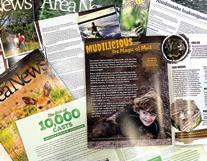
Renew online, or use this form to renew by mail or email.
Renew Your Membership
Your continued support of LOWDSA's programs and initiatives does make a difference.
Member Name:
LOGIN EMAIL:
Alternate Email:
Address:
City: Prov/State:
Country: Postal/ZIP:
Home Phone:
Cottage Phone:
Mobile Phone:
m YES, send my renewal notice by email
Use your smartphone camera app to scan this QR code and renew your LOWDSA membership online.

You can also contribute to our EISP Fund, purchase pine seedlings, and order gift memberships while you’re there!
Renew by phone: 807-468-8715 or 1-888-265-9784
Renew by email: membership@lowdsa.com
You can choose between a Full Membership (magazine mailed) or a Virtual Membership (digital magazine).
» Full Membership: m 1 YR ($60) | m 2 YR ($120)
» Virtual Membership: m 1 YR ($52) | m 2 YR ($104)
TOTAL $ _ _ _ _ _ _ _ _ _ _ _ _
Seedling Day: May 18, 2024 10am - 1pm
Help reduce our carbon footprint while expanding your own patch of forest. Please order your seedlings by May 5, 2024.
m Clearwater Bay (Firehall) m Storm Bay Rd. (Firehall) # of bundles (of 15) __________ at $15 each
TOTAL $
A donation of $5 from each member would support an entire LakeSmart position and contribute to LOWDSA’s mobile boat wash station! Contributions to the EISP Fund can be made online any time at lowdsa.com/campaigns/eisp.
m $250 m $100 m $50 m $25
m Other $_____________________________
TOTAL $ _ _ _ _ _ _ _ _ _ _ _ _
To purchase multiple gift memberships, please attach each individual’s contact information to this contact form.
m Full Membership, $60 m Virtual Membership, $52
Recipient’s Name: _______________________________
Recipient’s Email: _______________________________
Recipient’s Address: ______________________________
m Please send give card with message:
TOTAL $ _ _ _ _ _ _ _ _ _ _ _ _
GRAND TOTAL $






During its final meeting held in the late fall each year, the Lake of the Woods Control Board reviews the current and past season water level conditions and considers the best available forecasting information as it sets the winter regulation strategy and plans for spring. The strategy also prepares for freeze up by promoting stable ice conditions to avoid damage to docks and other infrastructure due to water fluctuations. With this objective, outflow increases from Lake of the Woods are kept at a minimum once a stable ice cover is in place.
When reviewing the conditions experienced in the Winnipeg River Basin, including Lake of the Woods during 2023, it is interesting to consider how the weather in our region and elsewhere continued to reflect the extremes resulting from climate change. According to Environment and Climate Change Canada (ECCC), 2023 was the warmest year since 1948 when national climate record keeping first began. This is consistent with information from the National Oceanic and Atmospheric Administration (NOAA) of the U.S that advised 2023 was the warmest year on record.
Beginning in mid-May last year, precipitation was below normal which affected flows from tributaries and lake levels. Throughout the spring and summer much of the basin received very little precipitation with occasional rain events between lengthy dry periods. When compared to levels of the last 30 years, precipitation from January 1 to October 15, 2023, ranked as the lowest or second lowest in many basin areas. Lake of the Woods inflow fell to the 9th percentile over the summer and the level was 322.67 m (1058.6 ft), on October 12, a 20th percentile level for that time of year. Drought conditions continued to the end of the year and into 2024. December was warmer than average which resulted in the late arrival of ice cover. For example, in January, Whitefish Bay still had open water. Beginning in mid-January, temperatures began to drop, and the region experienced its coldest weather since the start of winter. However, with very little snowpack many areas of the basin were still classified as being in a moderate to severe drought.
The warm weather was partially the result of a moderate to a strong El Nino effect which had previously been forecast by both ECCC and NOAA. This effect pushes the predominant storm trajectory over North America further south with impacts in Canada primarily being felt in the western provinces and Northwestern Ontario. Planning for spring, it was anticipated that the basin would continue to experience a mild winter with lowerthan-normal snowfall. As of the writing of this article in January, the level of Lake of the Woods was 322.58 m (1058.3 ft), a 30th

percentile for the time of year. With climate forecasts continuing to predict drought conditions, the Control Board Secretariat will be monitoring water levels and forecasts closely.
When looking at spring targets however, it is also important to consider the possibility of heavy spring rainfall. As such, the strategy is targeting an end-of-winter level no higher than 322.50 m (1058.0 ft). We will see what the weather and climate bring.
Please be cautious and aware of local conditions when on the ice and be aware that the mild weather has resulted in ice conditions that may be different than previous winters. For up-to-date information on water levels and the work of the Control Board please visit the web site at lwcb.ca. an
LOWDSA has received many questions asking what the heck is percentile and what does that really mean to our water levels?
In the water level graphs legend page of the Lake of the Woods Control Board Secretariat web site, provided below:
• The red line at the top is in the 90th percentile.
• The red line on the bottom is in the 10th percentile.
• The yellow line in the middle is at the “mean” or normal range, which is between 25th and 75th percentile.
To understand what that means, it helps to look at the opposite of those values. For a 90th percentile level, the level has been higher than this only 10% of the time.
Levels and flows are in the “normal” range when they are in the yellow band (between 25th and 75th percentile) and they are “extreme” when they are above or below the red dotted lines.











Every spring northwest Ontario wakes up from winter. With that renewed energy and excitement comes opportunities. This spring and summer, there will finally be an environmentally responsible solution for the disposable shrink wrap used to protect boats and equipment from winter’s harm. Annually, the Kenora area uses about 110 tonnes of blue or white shrink wrap to protect seasonal vehicles and equipment, which until now, has mostly ended up in landfill.
Scwrap Environmental Services is a new company that will be providing an onsite baling process, which is completely portable and self-powered. The process involves baling the plastic in to 1,100 – 1,200 lb. bales approximately 4’ x 3’ x 4’ high. It is estimated that one bale will contain the plastic from 80 or so typical Lake of the Woods boats. The bales will be stored on site until they are picked up (by a single truck) at various sites and moved to a plastic conversion facility. This transportation process in itself dramatically reduces the amount of diesel fuel required to move this product to landfill, significantly reducing the carbon footprint.
The challenge for the large users of shrink wrap has been its disposal. Currently, most wrap is put into disposal bins. The problem is that the plastic film is hard to pack, and the bin is full with very little weight or solid volume. These bins are then transported to a landfill. The user is responsible for bin rental, the labour to fill the bin,
bin transportation and tipping fees, making the process expensive and very inefficient.
Additionally, shrink wrap plastic is made from non-renewable petroleum products extracted from the earth. The process of extraction, refining, and transporting petroleum has a considerable impact on the environment. The world is starting to recognize the impacts of petroleum and collectively many countries are endeavouring to shift away from fossil fuels.
Recycling the shrink wrap film will result in helping to extend the life of developing expensive landfills. Recycling plastic also reduces the amount of greenhouses gases when virgin petroleum products are extracted and refined.
Following are some of the products now made from recycled plastic and as the volume of recycled plastic pellets becomes

available to make more products. Plastic pellets are created when recycled plastic is ground up, cleaned, and cut back into pellets. Pellets are created as a commodity to fit all types of plastic manufacturing equipment used to make many types of products.
• Automobile applications: battery cases, signal lights, battery cables
• Brooms, brushes and ice scrapers, garden rakes
• Oil funnels
• Bicycle racks
• Storage bins
• Shipping pallets, sheeting, trays
www.blackrocksec.com
Governments and industry are recognizing the importance of recycling on a larger scale. Some corporations are starting to
 Much of the shrink wrap used to protect seasonal vehicles and equipment currently ends up in landfill.
Much of the shrink wrap used to protect seasonal vehicles and equipment currently ends up in landfill.
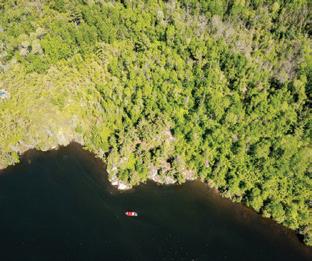









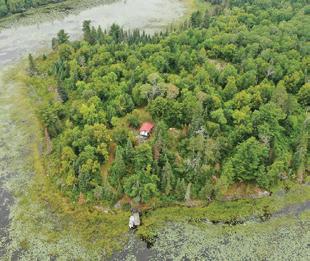




The cedar and canvas canoe: Icon of northern Canada for nearly a century. Beloved fixture of virtually every lake country cottage and summer camp for decades. Vessel of choice for Canadian legends from Tom Thomson to Bill Mason.
And no wonder. With its complex curves, its timeless quality, is there a more beautiful canoe? Is there another canoe that moves so gracefully through the water?
LOWDSA member Carl Hrenchuk, canoeist and canoe builder, fell in love with the canoe at 15, when his father took him and a friend on a 105-mile, week-long circle route along the Whiteshell and Winnipeg rivers. He has canoed and camped in the Kenora district—he camps summer and winter—for more than 45 years. Now retired, Carl builds exquisite cedar and canvas canoes not for profit, but for pleasure.

“A big part of the impetus is wanting to keep this tradition alive,” explains Carl. “I just love the woodworking and will keep doing it as long as my clients cover the cost of materials.”
Carl made his first canoe in 1978, in a friend’s basement. “It was a long, stretched-out thing, too narrow. The lines of the bow and stern were a little funny. Not really a thing of beauty but to my eye, it was wonderful because I’d made it.”
He adds with a laugh, “We had to take the casement out of the basement window to get the finished canoe out!”
Through careful study, trial and error, Carl became a skilled and exacting craftsman. In the 1980s, while managing a seasonal fisheries research camp at South Indian Lake, Manitoba, he launched Esker Canoe Company. “It became clear to me that hunters and trappers could really use a big canoe for moose hunting. For all of those bays and the inland lake traplines, it would be tremendously well suited.”
He built freight canoes with a wide transom for an outboard motor. “They were designed to carry a load very efficiently. A freighter moves through the water much more easily than a boat because its lines are essentially canoe-like.” When he got requests for paddling canoes, he built those too.
But five years later, Carl returned to university and launched a career in environmental policy and ecological assessment. Esker Canoe Company went the way of Peterborough, Chestnut, Kildonan, and other manufacturers once synonymous with the cedar and canvas canoes.

“But I always had it in my mind that I was going to get back to building canoes at some point,” he said.
“Two of my daughters work in the environment field and the people they work with tend to be outdoorsy,” Carl explains. “I put the word out through their networks, and that got me started.”
Asked to describe how he makes a canoe, Carl motions towards stacks of rough boards and planking in his Winnipeg workshop. “This is a canoe,” he says. “It’s not quite like being a sculptor who releases a shape out of stone, but selection of materials is huge in terms of durability and longevity.” Carl sources sitka spruce for inwales, white cedar for ribs, red cedar for planking, and hardwoods for seats and thwarts.
The canoe is constructed over a wooden form covered with metal bands laid widthwise. Inwales go in first, then stems (the curved pieces at the ends). Ribs are steamed and bent into place. Planking is laid over the ribs and secured
Left: Carl stretches canvas over the bow.
Right page: Next steps: filling and painting the canvas, varnishing the interior.
Below: A sleek new cedar and canvas canoe is ready for service.

with brass tacks clinched against the metal bands. After canvassing, a clay-based filler is worked in and left to cure. The canoe is painted, outer gunwales added, and the interior varnished. Brass stem bands are added and—the finishing touch—an Esker Canoe decal is applied to the side.
Does it hold up next to a synthetic canoe?
“To me, despite all the innovations and all the new materials—aluminum, plastic, kevlar—it’s by far the most beautiful and quietest in the water. And, unlike those materials, it is endlessly repairable.
“If you want something that you can leave on the ground, run into rocks with impunity, drag over a portage, well I guess this isn’t for you. But back when just about every cabin on Lake of the Woods had one, people didn’t treat them that way. The cedar and canvas canoe isn’t fragile by any means, but needs respect in its use. It was rugged enough to be the working canoe of prospectors, trappers, and hunters for almost a century,” he said.
“Cottages are about the place, the experience. I’d like to see another generation have the chance to try a cedar and canvas canoe. A certain number will be hooked, guaranteed, since they are a delight to paddle and so in keeping with the boreal environment.” an










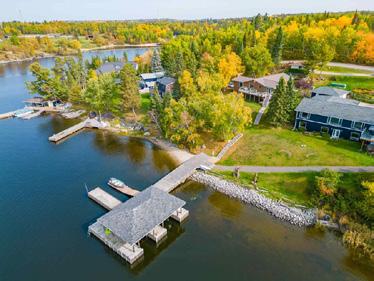




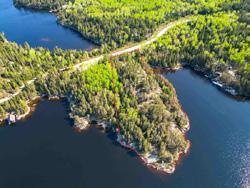







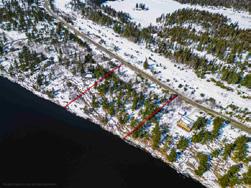


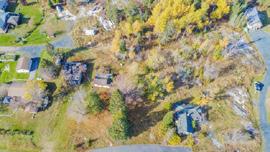




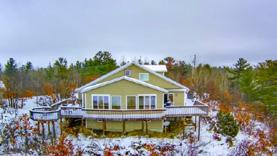











Regular readers will know all about northwestern Ontario’s best kept secret—IISD Experimental Lakes Area (IISD-ELA)—just north of Kenora.
Only the most loyal of fans, however, will know that since 2019, the world’s freshwater laboratory has been working across Africa’s Great Lakes to share solutions on problems that might be presenting themselves thousands of kilometers away, but actually feel closer to home than you might think.
But first, some basics.
The African Great Lakes (or the AGL) are lakes Albert, Edward, Kivu, Malawi/Nyasa/Niassa, Tanganyika, Turkana, and Victoria.
The AGL are highly valuable natural resources, renowned for their rich fisheries and "biodiversity hotspots." Consequently, they, and the ecosystem services they provide, underpin the welfare, livelihoods, and even recreation of over 63 million people across 10 countries (Burundi, the Democratic Republic of the Congo, Ethiopia, Kenya, Malawi, Mozambique, Rwanda, Zambia, Tanzania, and Uganda).
Despite the recognized importance of the AGL, these vital ecosystems and their livelihood support systems are threatened by the impact of human activity by numerous anthropogenic stressors at local, regional, and global scales.
The problems that plague Africa’s Great Lakes are surprisingly similar to those that North America’s own water bodies endure, from our very own Lake of the Woods to the five Laurentian Great Lakes that span Canada and our cousins south of the border.
Concerns about the sustainability of fisheries, for example. Or algal blooms. Invasive species. Microplastics. The role and voices of local and Indigenous communities. All of these questions and more affect water bodies on both sides of the pond, and across the world for that matter.
That’s why we partnered with the African Center for Aquatic Research and Education (ACARE)— to come together and strengthen science on large freshwater resources and the countries in which we both reside.
There is just so much we have to teach and to learn from each other.
And even since we joined forces, there has been plenty happening on both sides of the pond.
Dozens of early career women freshwater scientists have already participated in our African Women in Science (or AWIS) program whereby female scientists from across the African Great Lakes region travel across Africa and North America (even braving the cold to come to Winnipeg, Kenora and IISD Experimental Lakes Area) to gain access to new bodies of water, as well as trainings, networking opportunities, mentorship opportunities, and to make international connections.
By the time this article goes to print, Canadians scientists from IISD Experimental Lakes Area will have been learning from, sharing knowledge and expertise with, and just generally schmoozing scientists who work on the seven African Great Lakes at ACARE’s annual meeting in Kisumu, Kenya.
What can we do about zebra mussels? Do you have the same problems as us when it comes to too many nutrients, such as phosphorus, leaching off the landscape into lakes and causing algal blooms? How do you engage with local and Indigenous communities when starting a project?
All of these questions and more will have been explored.
Moreover, almost every week, IISD-ELA scientists around Kenora and Winnipeg meet (virtually, of course) with groups of scientists who work on the African Great Lakes to explore concerns and solutions regarding the health of their respective lakes.
And with more African scientists slated to head out to Lake of the Woods and IISD Experimental Lakes Area this summer, it looks like the relationship between the two continents is only looking to be forged even stronger. an
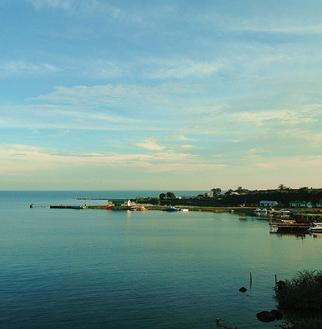

 All photos: IISD Experimental Lakes Area.
Top: Looking out over beautiful Lake Victoria (one of the major African Great Lakes) from Entebbe, Uganda.
Middle: A fisherman shows off his catch on the shores of Lake Albert.
All photos: IISD Experimental Lakes Area.
Top: Looking out over beautiful Lake Victoria (one of the major African Great Lakes) from Entebbe, Uganda.
Middle: A fisherman shows off his catch on the shores of Lake Albert.
Put a plan in place. Ensure there's enough science and management expertise. Coordinate actions bi-nationally. That’s our mission.


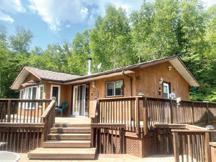



This study also found that phosphorus is the only parameter significant enough to warrant internationally agreed-upon WQOs. Phase I recommended developing a set of total phosphorus objectives for various segments of the Lake of the Woods and the Rainy River, while other priority issues could be addressed by Alert Levels.
Phosphorus is the primary nutrient responsible for fuelling harmful algae blooms (HABs). In our watershed, the south basin of Lake of the Woods is particularly susceptible to HABs, but they can and do occur throughout the lake, following nutrient flows in the water course. The goal is to ensure that phosphorus levels stay low enough to limit HAB growth. Since Rainy River is the primary contributor of water and nutrients to the south basin, this area just upstream of Lake of the Woods is where Canadian and Minnesota sciences have identified phosphorus management practices most need to be targeted.
Phase II of the project began in late November 2023. Among its goals are to develop specific recommendations for a set of WQOs for phosphorus for various segments of Lake of the Woods and the Rainy River, and to select and establish ALs for a priority short list of other substances and aquatic ecosystem health indicators. It will be necessary to review and update these water quality metrics from time to time to make sure we are always monitoring and addressing the issues that are of top-most concern at any given time. The Phase II project will provide guidance for governments on how to adaptively manage and update WQOs, ALs and the monitoring and reporting regime necessary to track progress and report on exceedances to these metrics.
The Phase II project will also include a technical scoping for an international monitoring program / network that will help water resources managers and governments to measure progress toward meeting these goals and the IJC watershed board to
report on success or exceedances to these thresholds. Such a monitoring network would be an international collaboration, including agencies of provincial / state, federal and Indigenous Nations, and likely citizen monitoring groups.
To date, we have focused on reaching consensus on WQOs for phosphorus. Past studies have already provided the relevant data, so the current exercise is one of bringing resources managers together for technical conversations necessary to establish lake ecosystem objectives (for example, limiting the extent, severity, or duration of algae blooms), and then describing substance objectives for phosphorus to achieve those ecosystem objectives. In other words, what is our maximum amount of phosphorus that can be loaded into the lake each year while still meeting those ecosystem objectives, and how much can each upstream source of phosphorus be allowed to contribute to that load?
Concurrently this winter, through outreach and engagement with Indigenous Nations, we are beginning to learn more about other potential water quality and ecosystem concerns and priorities for ALs. In the late winter and early spring, we will generate a priority list of ALs for contaminants, nutrients, and high priority ecosystem threats. Some examples of potential aquatic ecosystem health ALs could be things like the presence of aquatic invasive species, the productivity of wild rice stands, or the success of annual fish spawning events.
Watershed-wide monitoring is ongoing, but the task in this project is to recommend a process through which agencies could collaborate to ensure water quality data are collected at appropriate locations and times, using methods conducive to assessing the impacts of our water management efforts toward achieving WQO and ALs. The project coordinator regularly meets with agencies and convenes group meetings to share data, build collaborations, and identify the resources and capacity needs necessary to support long-term, sustained monitoring and reporting success.

A final report, summarizing all recommendations, should be delivered to the IRLWWB in summer 2024. an
Satellite image of Chlorophyll-a (algae pigment) concentrations across Lake of the Woods on October 2, 2023. Image from EOLakeWatch data by Dr. Caren Binding (canada.ca/en/environment-climate-change/services/water-overview/satelliteearth-observations-lake-monitoring/interactive-algal-bloom-monitoring-tool.html)
With over 14,000 islands, the incredible undeveloped shorelines and forests on Lake of the Woods are an important stopover spot for migratory birds. In fact, over 250 bird species have been recorded in the area. This includes many species at risk, like the black tern whose population has decreased 65 per cent over the last five decades due to the loss of wetlands.
We’re fortunate to have such an abundance of natural habitat here! But less than 10 per cent of the Lake of the Woods area is currently under protection, which puts its lush natural habitats at risk of development, leaving birds with fewer places to stop during migration at a time when they are facing more threats than ever before.
The Nature Conservancy of Canada (NCC) has recognized the ecological importance of the Lake of the Woods area. Since 1997, NCC has worked to conserve and care for lands in the area for the benefit of nature and people; most recently protecting 82 hectares on Town Island in 2022.
In addition to the stewardship work NCC completes every year to take care of these protected lands, there are also many things private landowners can do to help minimize the threats that migratory birds and other wildlife face. With such a vast landscape, many small acts taken by many people can make a big difference for our flying friends!
Many of the major difficulties that migratory birds face are most present in the places where humans live. Some of the most present dangers include light pollution, window strikes, outdoor cats, habitat loss and invasive species.
Here are a few ideas to try this spring to make your property a welcoming place for birds along their migratory journey:
Learn how to identify the local birds you hear or see. The Merlin Bird ID (merlin.allaboutbirds.org) and eBird (ebird.org/about/ ebird-mobile) apps provide tools to help you along the way. You can also learn how to distinguish between locally native or invasive species to learn which ones may be threatening bird species and other wildlife – wetland invasive species like narrowleaf cattail and European common reed (also called phragmites, pronounced “frag-might-eeze”) can rapidly outcompete the native plants that our local birds rely on for food and nesting habitat. Reporting your observations in apps like eBird or

iNaturalist (inaturalist.org) can help scientists better understand trends and how to mitigate their environmental threats.
Do your part to help migratory birds by removing threats to birds on your own property. Some ways to make your backyard more bird friendly include:
1. Help prevent window strikes by applying strips or dots of tape, stickers, or paint spaced in a grid pattern two inches apart to the outside of the window. This helps to break up the reflection so birds recognize they cannot fly through the glass. You can also buy pre-made window markers specifically for this purpose, such as Feather Friendly window tape (featherfriendly.com).
2. Light pollution is the second leading cause of death amongst migrating birds, confusing birds and causing them to collide into buildings. Make sure to turn off outdoor lights and close your curtains at night during migration season to minimize these disturbances as birds pass through.
3. Improve your yard’s biodiversity by planting native plants, trees and shrubs that provide food and shelter to birds. Birds all need insect protein (like caterpillars) to feed their young. By planting the native plants that our local insects have evolved with, you are planting bird feeders. In Bringing Nature Home by Doug Tallamy we learn that a native oak tree, like a bur oak, will support over 534 species of caterpillars in North America; but a ginkgo tree, native to
east Asia, supports zero. Check out the “Grow Me Instead” guides (ontarioinvasiveplants.ca/resources/grow-meinstead/) published by the Ontario Invasive Plant Council for gardening ideas.
4. Lastly, if you have a feline companion who likes to explore outdoors, use a leash or "catio” to allow them to still enjoy some outdoor time while keeping our birds safe. Domestic cats are the number one threat to birds in Canada.
We hope these tips get you on your way to welcoming and identifying more birds on your property in the years to come. If you have any of your own tips or ideas, we always love to hear them. Share your small acts of conservation with us on social media with tags @ncc_cnc #MySmallAct!
Finally, thanks to the many NCC supporters from the Lake of the Woods community and beyond, current and future generations will be able to connect with nature and each other in this special place in the heart of Lake of the Woods.
NCC is currently seeking donations to protect and care for Paper Birch Hills, a 53-hectare property containing mixed forest, wetland, and shoreline habitat, west of Kenora and south of Highway 17 near the Vernon Nature Area hiking trails. If you would like to learn more or donate to NCC’s work on Lake of the Woods, please visit natureconservancy.ca/donate or get in touch with Pia Vahabi at pia.vahabi@natureconservancy.ca. an

A few years ago, a “dummy” with a box of “Smarties” was feeding them to a roadside bear while his friends videotaped the action. Unfortunately for all concerned, the bear’s appetite outlasted the Smarties, and being a wild animal, he moved on to next best thing. The “dummy” was saved when bystanders put their own lives at risk to get him out of the trouble he had caused.
Sadly, police had to shoot the bear and send its brain to be tested for rabies. In my humble opinion, they may have been testing the wrong brain for a disorder. It’s tragic when a beautiful wild animal has to be destroyed because of someone’s foolishness.
Feeding wildlife is illegal but laws alone cannot protect the natural world. Our interaction with nature needs to be guided by strong ethics. When we are photographing or just watching any wildlife, it is necessary to do it in ways which prioritizes their welfare over our own personal experience.
There are excellent codes of practices for wildlife photographers. Ontario Nature has extended those to include all nature watchers. You can find their version at ontarionature.org/ethical-wildlifeviewing-blog. Most of the recommendations are common sense like using telephoto lenses to give wild creatures enough space, avoiding any disturbance of nesting birds, staying on designated trails, being quiet. Avoiding any harm to wildlife is fairly easy, when we are simply taking pictures or watching.
The use of drones to photograph wildlife is controversial and laws vary widely. They're not allowed in national parks, wilderness
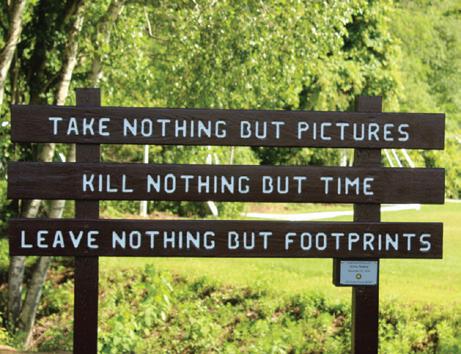
areas, and nature preserves. Where they are allowed, we must still consider their effects on the wildlife.
A 2015 study by the World Wildlife Federation, found that the heart rates of black bears in the vicinity of operating drones rose by as much as 135 beats per minute. That indicates that the drones were stressing the bears and might well have the same effect on other wildlife. That raises ethical questions about operating drones in the vicinity of wildlife even where they are legally permitted.

The ethics of advertisements of pickup trucks and sports utility vehicles are highly questionable with respect to the environment. One such ad glorifies careening wildly along narrow country roads in a manner which would almost certainly ensure unavoidable death or injury to wild animals. Other ads show vehicles skidding around corners at high speed and spewing dirt over the roadside vegetation. Still others show convoys of SUVs, pickup trucks, side-by-sides and other types of recreational vehicles all on destructive forays into pristine environments. These ads must be effective in encouraging consumers’ choice of vehicles or they would disappear. The ads may be equally effective in promoting behaviour which is destructive to wildlife. Perhaps the advertising industry needs an ethics awakening.
Also disturbing, Computer Generated Imaging allows advertisers to put animals in human settings exhibiting human behaviours. It’s possible this could make impressionable minds think these wild animals are a lot friendlier than they may be in their natural environments.


schedules to avoid periods when wildlife is most active, and we can drive at reduced speeds at dusk and dawn when wildlife is most likely to be crossing roads.
The biggest elephant in the room is the precipitous decline in animal numbers and the number of species in danger of extinction, largely due to climate change, habitat loss, and pollution. A recent United Nations report found that one in four animal species is in danger of extinction. In North America, bird populations have dropped by over 68 per cent since 1970 (see the Nature Conservancy of Canada article on page 26). The biggest threats are to our migratory birds, which, in addition to their summer habitat, require extensive natural areas in their wintering grounds in tropical and sub-tropical areas. There are organizations devoted to preservation and expansion of those critical habitats. That takes money. Donating to such organizations is a valuable option open to all of us.
Another media train wreck which exemplifies unethical treatment of wildlife is the popular series Tiger King. Space does not permit dealing with it in this article, but you can read about it (free!) online in the Atlantic
Perhaps the most damaging aspect of our interactions with wildlife involves motor vehicles, both directly through collisions and indirectly via carbon dioxide emissions and resource extraction to support motor vehicles.
Highways have been called “ribbons of death” by some. The toll of motor vehicles on wildlife is tragic and horrifying. We see the resulting carnage almost any time we take to the highway. Collisions with large mammals such as deer, moose and bears get the most attention primarily because those collisions also endanger human life and can damage vehicles. However, the toll on other wildlife such as smaller mammals, birds, reptiles and amphibians is equally disturbing and damaging.
As motorists, there are steps we should take to minimize the risk of collision with animals. For example, we can alter our travel
Our actions as individuals to improve the outlook for wildlife are important but the greatest power lies with governments. We can influence our governments by personal discussions with our elected representatives and by voting for those candidates that we feel are most committed to environmental issues. Perhaps the most effective way to influence governments is to donate to environmental organizations, which have much greater lobbying power than we have as individuals.
This article only scratches the surface of the problems threatening the natural world and the actions we might take as individuals and societies to alleviate them. The threats to wildlife populations are also threats to human survival. We can party until the music stops and hope that technology comes to the rescue in time to save us, or we can do our best as individuals. It seems obvious that we should do as much as we can to reduce our personal impacts on the environment, especially our carbon footprints and the amount of land and other resources required to support us.
Anything we can do to help assist in the survival of wildlife also helps to ensure the survival of mankind. Whether or not you are a lover of wildlife, your skin is in this game. an
When we grow some of our own food it can free up land for wildlife while reducing our carbon footprint and our impact on wildlife-endangering climate change.





How often have you arrived at the cottage or cabin and wished that you had brought more salad greens? Or found your careful meal planning had not worked out quite the way you wanted because your greens were turning yellow and limp? All you really wanted to do was put your feet up and enjoy the sapphire blue waters of Lake of the Woods—not scurry to town amidst throngs of others—nor use up boat gas for that precious vegetable. Perhaps working your hands into rich soil and gathering your produce would be good for the soul; at the very least, rewarding you with your very own convenience store.

We are all familiar with the treeline of Lake of the Woods. Majestic pine hanging precariously over the shoreline seemingly defying gravity. This seemed to be the answer to our search as to how we could possibly build a garden on this ancient granite. The woods tell the tale.

Water and drainage are sustenance to any plant. The unfolding contour surrounding the lake optimizes nature’s rainfalls. From the top, the surface water flows down to the lake, finding its way through the cracks and crevices in the rocks. The roots of the trees are
embedded in those fissures awaiting a drink; often filled with nutrients from soil that cascades with the rivulets.
It is a bit like catch and release in fishing. The structure of the rock allows rainwater to fill the cavities providing the necessary catch of water to the root system, but releasing surplus that might cause rot. The same applies to your garden on the rock. Standing water can cause rot to seeds and tender plants. When choosing a location for your garden, you will need to be observant of the slope that will provide the best drainage. Whether a base of granite or a base of clay, water that does not drain away is perilous to plants.
Conversely, leaving your garden for extended periods of dry weather is no better than over watering. My first layer to my rock and clay garden was paper. I did not want to add additional load to our solar system for watering of the garden, so I chose a combination of newspaper and flattened cardboard boxes laid as a first layer to the garden. It would assist in keeping the soil moist and prevent growth of weeds. My husband had built three beds, approximately three feet wide by sixteen feet long (walkways between) from six by six timbers. It was to be a small garden, primarily for summer use and not for preserving of any kind. A long log of twelve-inch diameter was placed at the end of the beds bridging the gap where the ground declined towards the lake. The slope of the land provided perfect drainage and gave me a needed twelve inches of soil for certain plants like tomatoes.
Our life on an island meant we brought in approximately six yards of loamy soil by barge. We coordinated with some other work that required a bobcat as it needed to be brought up to our chosen spot. It was an initial real dollar cost that would be amortized over many years of gardening. To that we added mushroom compost. We found a commercial mushroom grower outside of Winnipeg that loaded our trailer, at no cost for loading
 Some produce from our island garden consisted of carrots, zucchini, tomatoes, beans, cucumbers and not shown here, a lovely bouquet of fresh herbs.
Logs that we found on our island and floating in the bays were used to provide a perimeter for a raised bed.
Some produce from our island garden consisted of carrots, zucchini, tomatoes, beans, cucumbers and not shown here, a lovely bouquet of fresh herbs.
Logs that we found on our island and floating in the bays were used to provide a perimeter for a raised bed.
the spent compost. We brought it to our island by way of our ice road in March. Although much of its nutrient content had already been used by the mushrooms, it made a good substrate as its straw content is great for heavy soil and it continues to break down through the years. We chose organic bags of sheep manure using the recommended ratio to our soil.

Luckily for us, our island was only five acres with nowhere to hide. That, along with our dog, made it so we didn’t have to fence the garden to keep predators like deer or veggie eating rodents away. The garden was a focal point for me, right outside my kitchen window so that I could keep careful watch. I inspected daily to see each seed emerge; watched every starter plant for signs of stress. Our Alaskan Malamute was taught to walk the pathways. I avoided pesticides, digging up cutworms with a fork; lining

Not only did our garden on the rock produce vegetables and herbs, but a variety of wildflowers both for consumption and simple beauty.
the beds with copper mesh to control slugs and snails; planting peppery marigolds to attract beneficial lady bugs; surrounding ourselves with habitat for bluebirds and other bug eating songbirds. Gardening gloves were always at hand.
Is gardening on the rock worth it? Absolutely— from the garden to your table at the lake—and oh, so good for your soul! Like most things in life, if we build a strong foundation, things seem to fall into place. Keep that in mind when you build your garden on the rock. Happy gardening! an

 With good soil and drainage, our little garden grows and produces enough vegetables and herbs for our daily consumption.
With good soil and drainage, our little garden grows and produces enough vegetables and herbs for our daily consumption.












Miller Rd Lots Sioux Narrows
New subdivision located within walking distance of the charming downtown Sioux Narrows This subdivision offers a rare opportunity to build your dream home in a beautiful location There are five lots available to choose from, each equipped with access to hydro and septic system at the lot line, making the building process convenient Each lot comes with two designated boat slips on Lake of the Woods, providing you with easy access to the beautiful lake and all of its recreational activities The condo fees are approximately $75/month Don't hesitate to call us today Our team will work with you to ensure that your dream becomes a reality




Riverwood Subdivision
An Exclusive Neighbourhood offering PREMIUM Forested Acreages near the serene shores of the Winnipeg River System
These spacious backlots range from 4 9 to nearly 7 acres, offering you an ideal escape from the hustle and bustle of urban life Enjoy the convenience of being close to Kenora’s amenities, while also having access to a community-owned, private water access site Here, you can easily indulge in the full lake life experience of boating, paddle boarding, kayaking, and fishing These properties are a Haven for those seeking a work-fromhomelifestyle or a refreshing respite from city living. Don’t miss this rare opportunity to own your piece of paradise in this pristine forested community Please contact us for more details!

We all hope to tread as wisely as possible when we utilize natural resources for building projects. When I undertook a recent cottage kitchen renovation project, my goal was to come up with a functional, affordable, and sustainable renovation plan, using salvaged and reclaimed wood products as much as possible. The idea started when I was “gifted’ some pine kitchen cabinets from another lake family. These would replace my maple kitchen cabinets that I would then repurpose into a functional great room, bar and storage area and to upgrade my bathroom.
Wood that was never cut into lumber or used for construction, and often includes diseased trees.
Wood that was previously used in construction projects, so could include things like beams from demolished buildings.
Reclaiming and salvaging wood is a great way to do your part to tread a little more wisely, positively affect our climate, build more sustainably, and maybe save a little money along the way.


With the assistance of a creative carpenter, we worked with these salvaged pine cabinets to redesign and expand my kitchen space.
The next decision was to configure a new expanded island and decide what to use for countertops. I have always loved wood countertops and in particular, live edge options. A friend pointed me in the direction of Urban Lumber in Winnipeg. Here I was able to purchase reclaimed hardwood (elm) that was removed due to Dutch elm disease. At this sawmill, majestic elm and other hardwood species are diverted from the landfill where they are kiln-dried, planed and cut into a variety of off-the-shelf or custommade products. They partner with arborist companies to divert larger trees from the landfill giving them a second life as useable standard and custom-building materials. According to Urban Lumber, over 10,000 trees enter Winnipeg’s landfills each year. In their first year, this company was able to reclaim and reduce 10 per cent of this waste lumber. I was excited to find this sustainable reclaimed wood option, which I custom-ordered countertop
pieces for a three-sided island, a new centre-island dining room tabletop, three live-edge shelves for over the appliance bar, and a countertop for the new great-room workspace/bar area.
The benefits of using salvaged and reclaimed wood resources are significant.
• Lower carbon footprint: Live trees capture carbon from the atmosphere; however, wood will re-release the carbon when left to decompose or is burned. Much of the wood waste generated each year is turned into wood chips and sent to landfills, where it releases carbon dioxide into the atmosphere as it decomposes. Reclaiming lumber and other wood products serves to prolong the carbon storage and reduce greenhouse gas emissions. In addition, live trees can continue to grow in forests, capturing carbon as they grow. Emissions from harvesting, transporting, and manufacturing these reclaimed products are also reduced as compared to traditional practices.
• Reduced landfill space and costs: Tree removal and disposal in local landfills not only creates space demands on landfills but also results in tipping fee costs for those disposing of urban trees.
Since first detected in Winnipeg in 1975, Dutch elm disease has resulted in the removal of thousands of these majestic trees. Several tree species in Manitoba and Ontario are at risk from diseases and pests.
Diverting these hardwoods from urban landscapes to lumber mills is a win for the landfill, the arborist, the milling company, and most importantly for the environment. Check out options for purchasing reclaimed or salvaged wood products in your community. an
The Canadian Wood Waste Recycling organization cdnwoodwasterecycling.ca is working to build the national wood recycling utilization infrastructure across Canada, including the prohibition of landfilling and non-essential burning of wood, so that this resource can be repurposed into such products as lumber, pellets, briquets or animal bedding.
Some fifty years or so ago, Razberry Lane was a noisy place, bustling with machinery and the equipment necessary to construction areas in general and to a gravel crushing enterprise in particular. Giant loaders pushed rock into crusher jaws turning them into useable products. These in turn were trucked to building and road construction sites or to a concrete plant. Originally a gravel pit, as its material was removed it turned into a hollow bordered on the south side by a fast-running creek and towering evergreens, and on the north by the railway track.
Years flew by, circumstances fluctuated and altered until the day came when crushers and screeners fell silent, the loaders were parked for the last time and the trucks and their drivers disappeared. The machine shop alone still stood, filled with the detritus that accompanies construction sites everywhere. Wild animals began to reappear, feeling more at home in this quieter space. Deer, fox, groundhogs, squirrels, grouse and even the odd bear or wolf became frequent visitors.
Industry at the shop did not cease, however. During the ensuing years it launched a new brand of wood burners, designed and manufactured on site. Packaged ice was stored and delivered to customers far and wide from Minaki and Dryden to Ear Falls for some twenty years. Then there was the great snowplow invention with its own unique character, along with other innovations like “round” blocks of ice for instance. And so, it went for some time.
Empty spaces once blanketed by machinery gradually began to fill up.
The first small dome-shaped greenhouse was erected, inspired by fond memories of gardens past. More greenhouses followed plus a number of oddly shaped garden plots, some fenced, some surrounded by windows or whatever came to hand. The resident deer, ever vigilant, looked on with interest while the groundhogs made their plans.
Vegetables were planted in every available spot, with tomatoes prevailing, and every season turned into a learning experience. Then someone inquired if there were any extra garden plots for rent, and Razberry Lane entered a new era. From a one-family enterprise it has
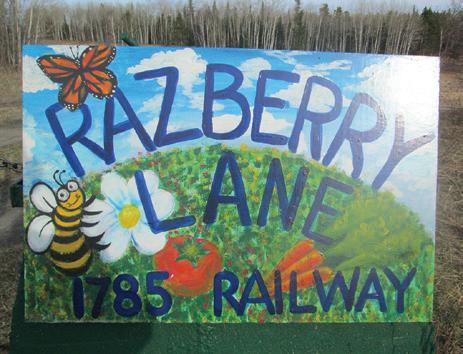
continued to expand to include would-be gardeners of every stripe, friends and kin alike.
During this period, the old shop having long exceeded its best-before-date, had to be replaced. A summer-long labour of love by family members and some good friends culminated in a shiny new shop where a long tradition of housing novel ideas and projects continues to this day.
Meanwhile, because we all have stories begging to be told and experiences to share, “Notes from Razberry Lane” was born. For the last eight years this column has covered topics ranging from gardening hints and ideas to wild blueberries, homemade bread, family pets, maple syrup, wood burning, and wild critters we met. Everything really, from cabbages to kings. Well, maybe not kings so much.
We wrote about the things we love, the things that matter to us and it’s been a fun and satisfying ride. But now the time has come to say farewell to those of you who regularly look for us in the Area News. We’ve appreciated your company and readership and wish you well.

Change is an inevitable part of life, but here at Razberry Lane when one chapter closes, a new one usually opens.
So goodbye and happy gardening.
—Anita & Henry Rasmussen anThis is one of my favourite recipes for a tough cut of beef. I'm not sure where I got it, and I have modified it over the years. I have used a wok as well as a frying pan, and even used the marinade on steak for the barbeque. I have also used a variety of different vegetables depending on the season.
Serves
4
8-10 oz beef steak (such as rump)
1 onion
1 green pepper
2-3 tbsp vegetable oil—I use my own judgment on the quantity a few small ginger root slices chili pepper if you like things a bit hot
2 tbsp black bean sauce (I have also substituted with hoisin and oyster sauce)
Marinade
1/2 tsp baking soda or baking powder
1/2 tsp sugar
1 tbsp soy sauce
2 tsp rice wine or dry sherry
2 tsp sesame oil
2 tsp cornstarch paste (mix 2 tsp cornstarch with 1 tbsp cold water)
1. Cut beef into small thin strips. Mix together marinade. Add beef strips. Turn to coat and leave marinade for 2-3 hours. The longer the better.
2. Cut onions and green pepper into cubes.
3. Heat oil in a preheated wok. Add beef strips and stir-fry for about 1 minute. Remove with slotted spoon. Keep warm.
4. Leave only about 1 tbsp of oil in the wok. Add ginger, chilies, onion and green pepper. Stir-fry for about 1 minute. Add black bean sauce, stir to coat and return the beef strips to the wok. Blend well and stir-fry for another minute. Can be served over noodles, rice or all by itself. an






Understanding the moon’s phases and its position in the sky in relation to the sun adds a great deal to our appreciation of the changing days, months and seasons. The longer, more comfortable evenings of early spring are ideal for moon-watching. Like the sun, the moon appears to rise in the east and set in the west. It follows roughly the same path as the sun through the sky and is visible during the day as much as at night.
Unlike the sun, however, the moon rises each day an average of 50 minutes later than the day before. We see the moon because it reflects the light of the sun. It takes the moon 29 1/2 days to go through the full cycle of eight distinct phases.
Beside each phase, we’ve included the dates for early April through early May 2024. To see a moon phases calendar, go to spaceweatherlive.com/en/moon-phases-calendar/2024/4.html
1
The new moon rises and sets with the sun and stays close to it during the day. The moon is between the earth and the sun, so the sun shines only on the far side of the moon making the moon invisible.
The moon now rises and sets shortly after the sun and is quite striking in the evening twilight, low in the west. Earthshine (sunlight reflected off the earth, onto the moon and back again to our eyes) dimly illuminates the moon’s surface to the left of the crescent. Looking like the rounded part of a D, the waxing crescent is “Developing” towards the full moon. This phase is poetically described as the moon’s “ashen glow” or the “old moon in the new moon’s arms.” Note, too, that earthshine is most pronounced during April and May.
Like the last quarter phase, this is the familiar “half-moon.” It is called a quarter moon, however, because it has completed one quarter of its cycle. A first quarter moon rises around noon and sets around midnight. This is the best moon phase for looking at the moon’s surface through binoculars.
The word gibbous means “like a hump.” The somewhat footballshaped waxing gibbous moon rises late in the day and shines most of the night. Within a few days it looks very similar to the Full Moon.
Full Moon APRIL 24, 2024
The beautiful full moon rises at sunset and sets at sunrise. It often appears like a huge orange ball as it climbs above the eastern horizon in the evening. When it is full, the Moon is on the side of the Earth farthest from the Sun, so the Sun lights up the entire visible side of the Moon. The full moon also appears to be larger at moonrise than when it is riding high in the sky. This isn’t because the moon is any closer than usual. It is simply an illusion. When measured or photographed, the moon is exactly the same size, no matter where it is in the sky.
Waning Gibbous APRIL 25-30
The waning gibbous moon rises after sunset and starts to take on the shape of a football or a C. The moon is “Crumbling” away. You often see this phase in the west in the early morning. It can be quite striking as it almost seems to float against the pale morning sky.
Third (Last) Quarter MAY 1-2
This “half-moon” phase rises in the middle of the night and sets at mid-day.
Waning Crescent MAY 3-6
What is left of the crumbling moon rises and sets just before the sun and stays in the sky most of the day. It is exquisitely beautiful at dawn.
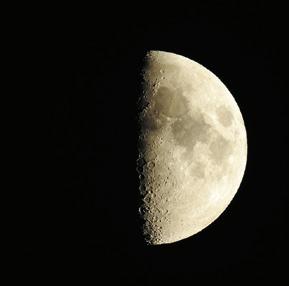
The first and last quarter phases are excellent for seeing details of the moon's surface through binoculars or a telescope.
The moon goes through eight distinct phases over 29 1/2 days.
Try to observe the moon each day that the sky is clear. Each time you see the moon in one of the eight phases, draw it in a journal and write down the date and time. If you wish, take a picture of the moon in each phase, print it and glue it in your journal.
For this activity, you’ll need a strong flashlight, a Styrofoam ball or orange and a pencil. In a dark room, place the light source on a shelf or stepladder at about eye level. Stick the pencil into the orange or ball. Stand facing the light, holding the ball out in front of you at arm's length and a little higher than your head. You are looking at the New Moon, since only the back of the ball is illuminated. Rotate slowly to the left, keeping the ball in front of you. Soon you will see a little crescent form (Waxing Crescent). Keeping turning until you see the entire right side of the ball illuminated. This is the First Quarter. Rotating a little further, you will see the football-like Waxing Gibbous phase. When your back is to the light, the Full Moon appears. As you carry on, you will be looking at the Waning Gibbous, the Last Quarter and the Waning Crescent. A full rotation brings you back to the invisible New Moon.
Use an orange, pencil and flashlight or other light source to understand why we see the moon's different phases.

If you’re like we used to be and have trouble telling whether the moon is waxing or waning— the illuminated portion growing larger or smaller— remember to look for the shape of a “C” (crumbling or waning) or a D (developing or waxing). The following mnemonic may also be of help.
In the waxing crescent phase, "earthshine" dimly illuminates the moon's surface. This is sunlight reflected off the earth, onto the moon and back again to our eyes.

Light on right, moon soon bright. Night on right, moon soon out of sight. “Light” refers to the illuminated part of the moon; “bright” refers to the full moon; “night” refers to the dark part of the moon, and “out of sight” is a reference to the New Moon never being visible.

Located on Darlington Bay, this newly created lot offers 2.47 acres with 275 feet of south facing shoreline. It is well treed with good privacy and deep water with long views. Call today for a viewing!
$239,000 + HST
Carmichael Real Estate Inc. 807-466-2236 / lakeofthewoods.net

Beauty Bay Golf Course and Resort
LOT TJ2 at the prestigious Beauty Bay Golf Course and Resort is a year-round, openconcept lakefront home built in 2011, with south-facing views and close to the shores of Black Sturgeon Lake.
$559,900
RE/MAX NorthWest Realty Brokerage 807-468-4573 / remaxnorthwestrealty.com

Clearwater Bay, Lake of the Woods
8.85 acre estate size property with 633 feet of sand beach and rock shoreline with several potential build sites. Road access.
$2,100,000
Greg Kirby, Re/Max First Choice Realty Ltd 807-466-8266 / gregkirby.ca

Bay Street, Keewatin
1,652 square foot 4/5 bedroom, 2 bath family home on 50’ x 100’ lot in a quiet Keewatin neighborhood.
$359,000
Greg Kirby, Re/Max First Choice Realty Ltd 807-466-8266 / gregkirby.ca

This lakeside 3 bdrm cottage features a loft, bunkie, and spacious sunroom with lake views. Enjoy outdoor entertainment areas, including a fire pit and dock with a new deck.
$775,000
Century 21 Northern Choice Realty Ltd.
Independently Owned & Operated – Brokerage 807-468-3747 / century21kenora.com

122 Pebble Road
Welcome to the Bigstone Bay Lakehouse! If you have a large family and are looking for a newly renovated year-round getaway, then look no further and book a showing today.
$2,695,000
Cabin Country Realty 807-468-3541 / cabincountry.com

Incredible value in Morson on Lake of the Woods
Island property with two full cabins, total of 5 bedrooms & 3 bathrooms, 1.5 acres and 739 ft. of shoreline. Find out more on our website.
$399,000
Northwoods Realty 807-226-1024 / northwoodsrealtyltd.com

655B Rocky Inlet Rd, Fort Frances
Custom-built 1,900+ sq ft home, 12 yrs old. Vaulted ceilings, hardwood floors, granite kitchen. Walkout basement w/ suite. New furnace, A/C. Rainy Lake views & access, dock, gazebo.
$789,900
Century 21 Northern Choice Realty Ltd.
Independently Owned & Operated – Brokerage 807-468-3747 / century21fortfrances.com
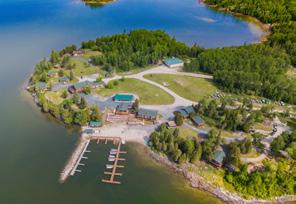
Cedar Point Lodge
Here is an opportunity to take over a wellestablished family owned business in some of the best fishing grounds in Northwestern Ontario.
$2,950,000
Cabin Country Realty 807-468-3541 / cabincountry.com
Email membership@lowdsa.com or mail LOWDSA, Box 1160, Kenora, ON P9N 3X7
Next submission deadline: April 19, 2024 Please try to keep your listing to 35 words or less.
Lakefront Cottage – Clearwater Bay. South exposure, private, road access, (4) bedroom cottage on 6 acres. Steam room / locker room on the lower level and media room. (4) bathrooms, including (2) ensuite for the primary bedrooms, steam shower in primary bedroom. Kitchen, dining and living room that opens onto a (3) season enclosed porch with opening windows. Laundry room. Multiple decks, including a barbecue deck. Boathouse with plenty of dock and swimming space and ample room for docking boat(s). Starlink wi-fi. 2 minutes off Highway 1 and 15 minutes to Kenora. June 28th – July 5th, July 5th – July 12th, July 12th – July 19th, Aug 21st – Sept 2nd and September available dates. $5000 a week, peak season. Contact: jhill@edgemontathletic.ca
Looking for a full season rental on Lake of the Woods? Seasonal rental available for summer of 2024. We are offering a 2 bedroom 1.5 bathroom water access cottage in the Welcome Channel area. Fully furnished and equipped. Starlink internet and Shaw satellite TV. Protected bay and boathouse. Plenty of docking. 10 minutes from Kenora. Available May long weekend through to Sept 15th. Contact for more information, pics or in person viewing. Email: quietchannelcabin@gmail.com or Text 807 407 3001 Road Access Clearwater Bay Cottage. Steps away from the lake, recently updated 4-bedroom, two-bathroom cottage, including master ensuite. Lakefront cottage with southern exposure, beautiful screened veranda, east and west facing docks, with dock slip available. Wifi, full kitchen, woodstove, and BBQ. Minutes from liquor and convenience store. $3000 per week. For more information email burmaroadrental@ gmail.com
Quiet Bay Cottage Rental. Cozy 2 bedroom cottage on Shragges Island, Lake of the Woods. This property is lake access only so guests will need their own transportation. Enjoy a private dock with boat parking for two boats and sauna, lots of trees for privacy, a big deck looking out on protected Quiet Bay. Bedroom 1 has a double/single bunkbed. Bedroom two is a loft with a Queen Bed. There is a screen room for eating outdoors bug free, an outdoor BBQ, indoor kitchen and bathroom. We rent Friday to Friday in the summer for $1750 a week. This rental is suitable for 2 couples or a family of 5 people maximum. We ask for no parties or pets. Please contact Karla at 8074644088 or email karlajoytreadway@ gmail.com to secure your week this summer.Please contact Karla at 8074644088 to secure your week this summer.
Island rental near Kenora. A modern two-bedroom with a sunroom that could be a third bedroom also has a pull-out sofa in the living room. It also comes with a oneroom guest cottage. Comes with satellite TV, good cell service also BBQ on a large deck. It also includes 2 kayaks and a canoe. must have own boat or boat rental, and also comes with a parking spot in Kenora. Available for one week during the first three weeks of July or the last 3 weeks of August. Composting toilet knowledge would be helpful. $1350/ wk. Ph. 204 888-4839
Lakefront - Clearwater Bay. South exposure; road access; spacious docks for swimming, fishing & boating. Large great room, kitchen & dining areas with spectacular lake view. 3 bedrooms; master with ensuite. Full second bathroom—shower & bath. Den with fireplace, satellite TV & pullout sofa. Dishwasher, microwave, washer & dryer. Large deck & BBQ. Minutes from the liquor store, gas & groceries. 1-2 week stays, JuneSept $4000/w. Contact dougpeever1955@ gmail.com for booking details.
LOW Storm Bay Rd 9. Large house with 9 bdrms, hot tub, multi level decks, granite kitchen, boathouse, sauna, WiFi, fireplace, washer & dryer, dishwasher. Kayak & boat are a possibility. $2500-$7000 weekly. Discounts available in the fall. mail@ markmcgregor.ch
Island rental Storm Bay Rd. near the rollers. 2 log homes, new mattresses, 1 king, 1 king, a double and a single. 2 kayaks & a boat can be included. $200-$375 per night. kaitlyn.mcgregor@gmail.com
Brule Point lakefront 3 bedroom cabin, LOW. Fantastic fishing area, quiet bay, two docking facilities with plug, private beach, fully stocked including freezer, large deck. Cabin sleeps 5, single bathroom/shower. Boat access only. 2024 rate $1390/week. Contact donna@taketwoinc.comdonna@ taketwoinc.com
Exceptional location on Coney Island. Minutes from Kenora / Keewatin with western exposure. Newer, open concept cottage with 4 large bdrms and three bathrooms. Separate master suite with bathroom and private deck. Amenities include a full kitchen with all appliances, dishwasher, microwave, washer/dryer, large island, separate dining area, wood burning fireplace and satellite TV. Screened porch with large wrap around decks overlook the lake, outdoor shower and built-in gas barbecue. Waters edge has a large main dock with two floaters that provide deep water docking and great swimming. Minimum 2 week stay. Email inquiries to bill.ralph@shaw.ca
Lakefront on Trout Lake. 20km north of Kenora. 2 or 3 bdrm cabin available for rent weekends or weekly May-June. Full kitchen & bathrm, TV/DVD, BBQ. Comes with canoe, kayaks & 12 ft. alum. boat. Deck off front of cabin; private deck at water’s edge; your own sand beach. Spring fed lake with crystal clear water. troutlake596@gmail.com
Lakefront Cottage on Lake of the Woods. Storm Bay Rd, road access. Includes 3 bedrooms, full kitchen, bath and laundry. 2 acres, private bay, sandy beach, floating dock and good fishing! Available June, July, August. $2,500/week. Text 204-951-5812.
Lakefront Cottage, near Welcome Channel. South exposure, water access. 5 miles from Kenora by boat. Private dock, hydro, Starlink internet, TV & DVD player, full kitchen w/ dishwasher & 3 pc. bathroom, additional outdoor shower, washer & dryer, bbq, screened porch, 2 bedrooms. Available Jun–Sep. Seasonal rental $15,000. Contact: lowcottage@hotmail.com.
Classified ads are a free service for LOWDSA members.
All classified ads are posted online at lowdsa.com. Note that they are posted within a couple days of submission and not subject to magazine deadlines.
Rustic 1000 square foot cabin on Zigzag Island (Clearwater Bay). 5-minute boat ride from Rockeries Marina. A boat rental could be available. Amazing fishing nearby. Satellite TV, great cellular coverage, bbq, kayaks, fire pit, and much more. Prefer a couple or former cottage owners. Knowledge of a composting toilet is essential. 1300$ per week. 204-688-7347.
Lakefront Cottage for Rent - Locke Bay. Road access 15 minutes North West of Kenora. Built in 2017 with 2 bedrooms and 1 bathroom. South exposure with private dock. Fully furnished. Includes Satellite TV, Internet, A/C, BBQ and fire pit. Would prefer a seasonal rental May - September $22,000 or $2000 week (2 week minimum). Please email kenoracottage@hotmail.com for more info.
Rush Bay road access, three bedroom two bath cottage. On one acre, one mile from landing. Bunkhouse, double boathouse with rooftop patio, tool shed, floating docks, front, back decks. Info at rushbay2@gmail.com.
Minaki Island Retreat. 4 BR, large wrap around screen porch, BBQ deck, upper deck off upstairs BR. Boathouse with spacious deck & swimming dock. S. half (1.12 acres) of island property, S, E, W exposures. Wood burning stove/glass front, baseboard heat, shower, hydro, phone, sat. TV, washer/dryer, composting toilet. 1975 sq. ft. 2 levels. Furnished, move in ready. 7 mins to Minaki marinas. Txt/call 651-200-2217, 651-274-7278.
Golf Course Bay, Lake of the Woods. For sale by original owner, 3200 sq. ft. 2 story A/C home, 2.5 stall garage with heated workshop, on 2 lots with sand beach, dock, covered boat lift, municipal water & sewer, natural gas heat, paved driveway, many other features. Phone (807) 468-8770.
Part-Time, General Labourer. For help around the cottage and land, possibly 3 days a week. Location: Northern Harbour area at the end of Storm Bay Road. Contact E-mail: peterzaj@mymts.net.
Exquisite high-end antiques for sale. These include a 9-piece walnut dining set, ladies spinet desk, roll top desk and swivel chair, carved curio cabinet with two curved beveled glass doors and matching grandfather clock from Austria, walnut cabinet with beautiful hand-carved panels in the doors from Belgium, and Dresden candelabras. Excellent condition. Prices negotiable. Must be able to take away. For more information and pictures call or text 807-465-4555.
Water Line and Pump System. Rona Franklin Electric submersible water pump, Well Rite flexcon pressure tank and pressure switch, 280' of 1" water line with electrical cable attached. Perfect for lake front cottage. $700.00. Please text David at 204-479-3146.
Sun Mar Excel Electric Compost Toilet. Used in an outhouse. Works great. $900. Text 204-770-7927.
32' medium duty self supporting tower.
Wade antenna model DMHD 32N. Concrete base, 2 rotor plates and mast. Was used for internet dish. 3 years old. Comes apart into 8' sections. $600.00. Text 204-770-7927. 10x10 old log shed. 14" overhang. The bottom has some rot but if someone is interested in dismantling and moving it to a new foundation it would be a very cool garden shed or playhouse for kids. We'd just love to see it repurposed as it is pretty cool. Dismantling/PU at Trinity Bay (boat access only) Email mridgen@aptn.ca.
Boat Rail System, Morson area. Approx. 100 ft. long with carriage for 17’ to 20’ boat (more or less) complete with winch system powered by a solar panel with charging system not including battery. Asking $4750. jaslaw1@shaw.ca.
Laser Sailboat or equivalent. Looking for a small sailboat to teach grandchildren how to sail in Deception Bay Area. Contact Tom at tpd@mts.net
Snow Blower or Garden Tractor. Looking to buy a good condition, used, gas powered 30 inch or larger, with Snow-Thrower attachment and or Blade. Contact: peterzaj@ mymts.net
Pre-owned boat trailer. For 17 1/2' Lund aluminum boat with 50 hp tiller motor; prefer 13" tires although not mandatory. Bunk or rollers. Contact 204-782-2808 or email jim.coldwell@mymts.net.
FIREBALL. An original mahogany fireball sailboat, lovingly restored, comes with one brand new set of sails and one original set plus spinnaker, freshly painted and ready to tear across your lake, trailer included, $1500. Email: mactuck@shaw.ca for google drive link to view photos.
Windsurfer Brand Sailboard with two sails. One sail is much larger than the smaller sail. Both are in great condition. Board could also be used as a paddle board. With center, dagger board in, very stable. Available May long weekend. $500. Call or text 620 363 1122. After May Long: local 807 543 2714.
1984 Tiara 31’ Lake Cruiser - Live aboard. Low-time Twin 350 Crusader engines, all new interior refresh with XM and loads of equipment. This ex-Great Lakes boat is ready to go. Contact at 204-292-3970.
LOVE DOGS? It's A Dog's Life needs foster and forever homes for their rescue dogs. Cottagers can help with short or long term fostering or adopting. Website: adogslife.cc or call 807-467-3647.






In early February of 1932, my uncle Rolph Nelson, along with family friend Rev. Earl Hooper, set off from Kenora on a winter road trip—destination, Toronto.
At the time, their selected route was determined primarily by the roads then available to travel. There was no Trans Canada Highway and there was no Highway 71 south to the Rainy River area and the U.S. border. The fastest route for them to the more developed roadways of our neighbour to the south was via ice road across Lake of the Woods.

and early 1930s, some cars were being built with in-car heating, as rudimentary as it was, although in those early days it was a luxury, after-market option that came at an added cost. I don’t know whether their vehicle included that comfort option, but I do know that they dressed for the sub-zero temperatures with raccoon coats, fur gloves and hats, and moccasins.
Their car had been outfitted with tire chains and a plow, but it was not the snow, but rather the ice, that caused delays in their progress to Warroad, Minnesota. They encountered huge ice cracks and ridges which sometimes forced them to take multi-mile detours.

I’m not sure what ice road maintenance was like 90 years ago, however, I do know that in the 1880s recognized winter trails were established to support the winter lumbering industry. For many years, the Ontario government, through their Crown Timber Agent, bushed out the trails. In 1905, the government refused to make the necessary grant for trail-breaking, and the lumbermen and others using the ice roads, like miners and the mail service, were left to clear and maintain their own roads. Initially, dog sled, horse and cutter, or shank’s mare were the primary means of transportation on these winter roads. However, with the invention of the automobile and its growing popularity, and the construction of roadways not necessarily keeping pace, owners were apparently venturing off-road in their travels.
Back to Rolph and Earl and their sometime off-road adventure. One of the major challenges they had to contend with was the weather and keeping warm in their Ford coupe. By the late 1920s
Once off the frozen waters of Lake of the Woods, Rolph and Earl continued their journey, passing through Minneapolis, Chicago and Detroit and then northeast to Toronto where Earl was attending a Baptist convention.
Their return journey followed a similar route with stops along the way to visit relatives. One of their stops was in Fergus Falls, Minnesota, where Rolph’s grandfather and uncle lived. So rare was their road trip that the local newspaper, The Fergus Falls Weekly Journal, featured an article about the intrepid travellers. What isn’t included in that article is the final portion of their journey—the return trip across the ice of Lake of the Woods.
Rolph and Earl left Warroad on Sunday, February 14 with the intention of returning home to Kenora that afternoon. But they didn’t make it.
Rolph’s dad became anxious when they didn’t arrive back as expected. He contacted a Winnipeg radio station to get the word out and finally made contact with a Mr. Mitchell of Baudette who flew the mail plane. Mr. Mitchell flew out across the southern portion of Lake of the Woods in search of the two men and their vehicle. He located the car without difficulty on the Big Traverse between Warroad and Oak Island.
According to the Kenora Miner and News which later headlined their mishap with “Kenora Car is Snowed Up on Big Traverse”, stormy weather and heavy drifts bogged down their progress, forcing them to abandon the car. They walked to a camp on Sandy Beach where they found good folks who ensured the men were comfortable and safe until more favourable conditions allowed them to continue.
The two men covered about 4,000 miles in their two weeks of travel. Approximately 150 of those miles were on ice roads of Lake of the Woods. an
















